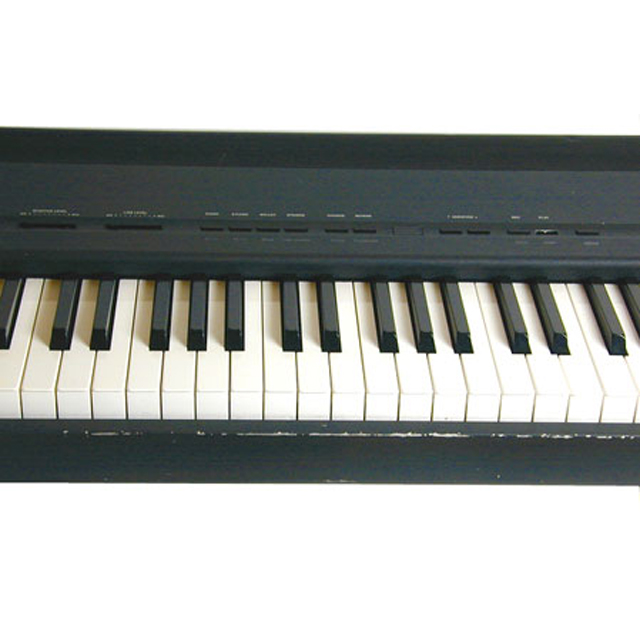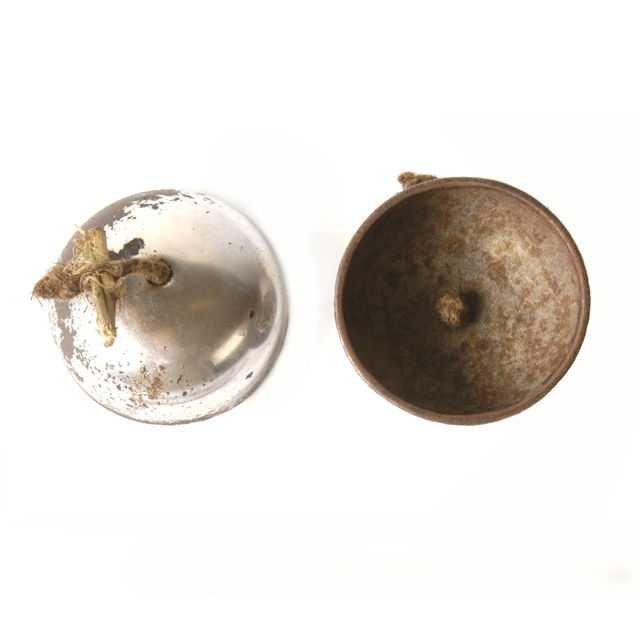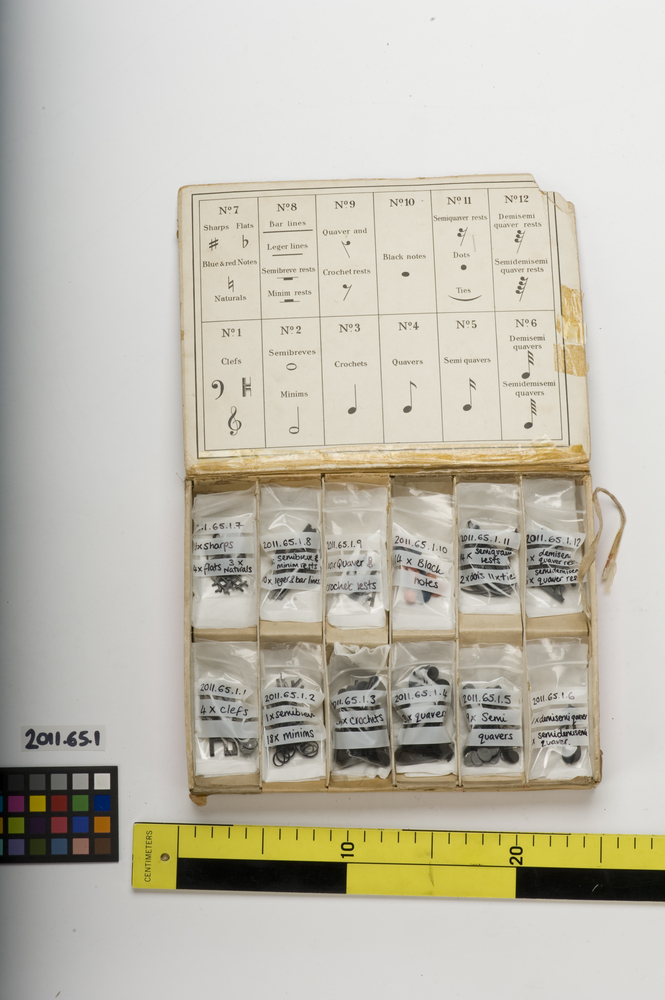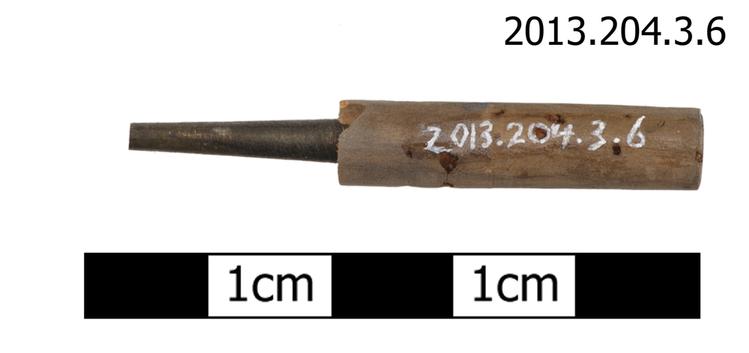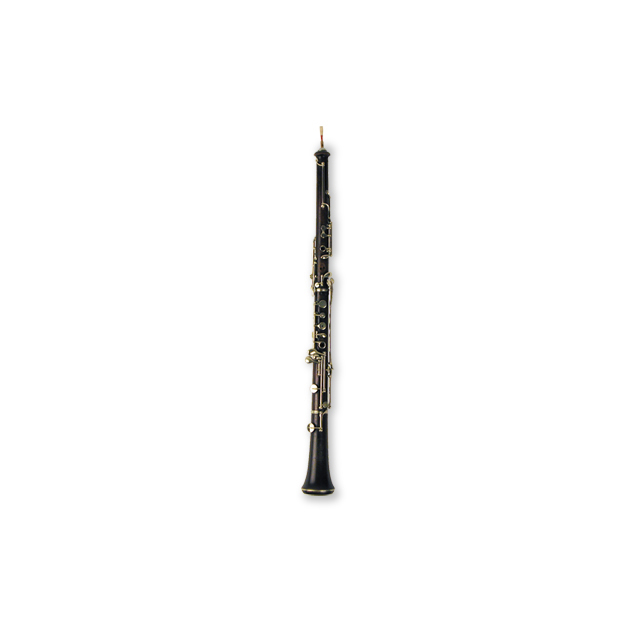
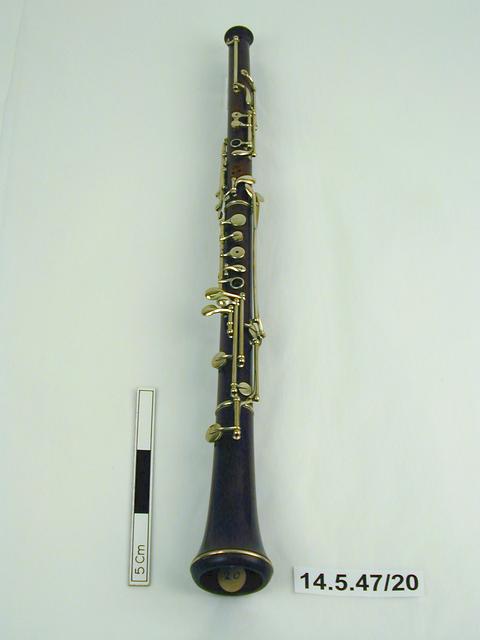
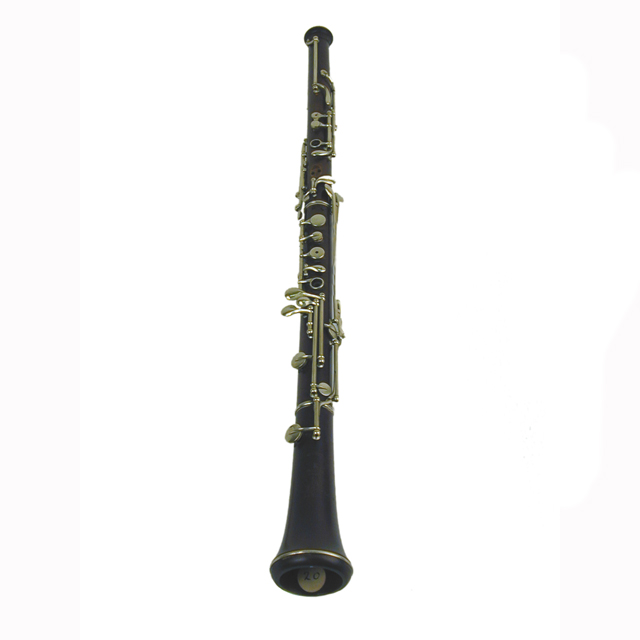
Oboe, reddish brown wood, probably stained, metal lined joints. Thirteen German silver keys, round, almost flat but with stuffed pads, mounted on pillars and incorporating rod axles and needle springs. Two octave keys. Half hole plates for I and V. Duplicate finger-plates for D sharp. Twin holes for III only. Covered hole for IV. Larger holes metal-bushed. Compass to B natural. Sounding length (length overall) is 54.0 cm. Two wooden pegs in face of middle joint socket extend through the metal lining. Stamped: Triébert Paris (Tower mark). Also marked: Pask 44 West Strand, London (Unicorn mark); Bréveté.
This Triébert oboe has a more penetrating sound than the Baroque oboe because of its narrower bore. This enabled it to be heard within the increasingly large orchestras of the 19th century. The narrow bore and small reed of the oboe creates a lot of resistance to the player's breath. This makes it ideal for performing the long melodic lines popular in 19th century music. Many players today use French style oboes. The 19th century innovations of the Triébert family were critical to the development of the modern oboe.




